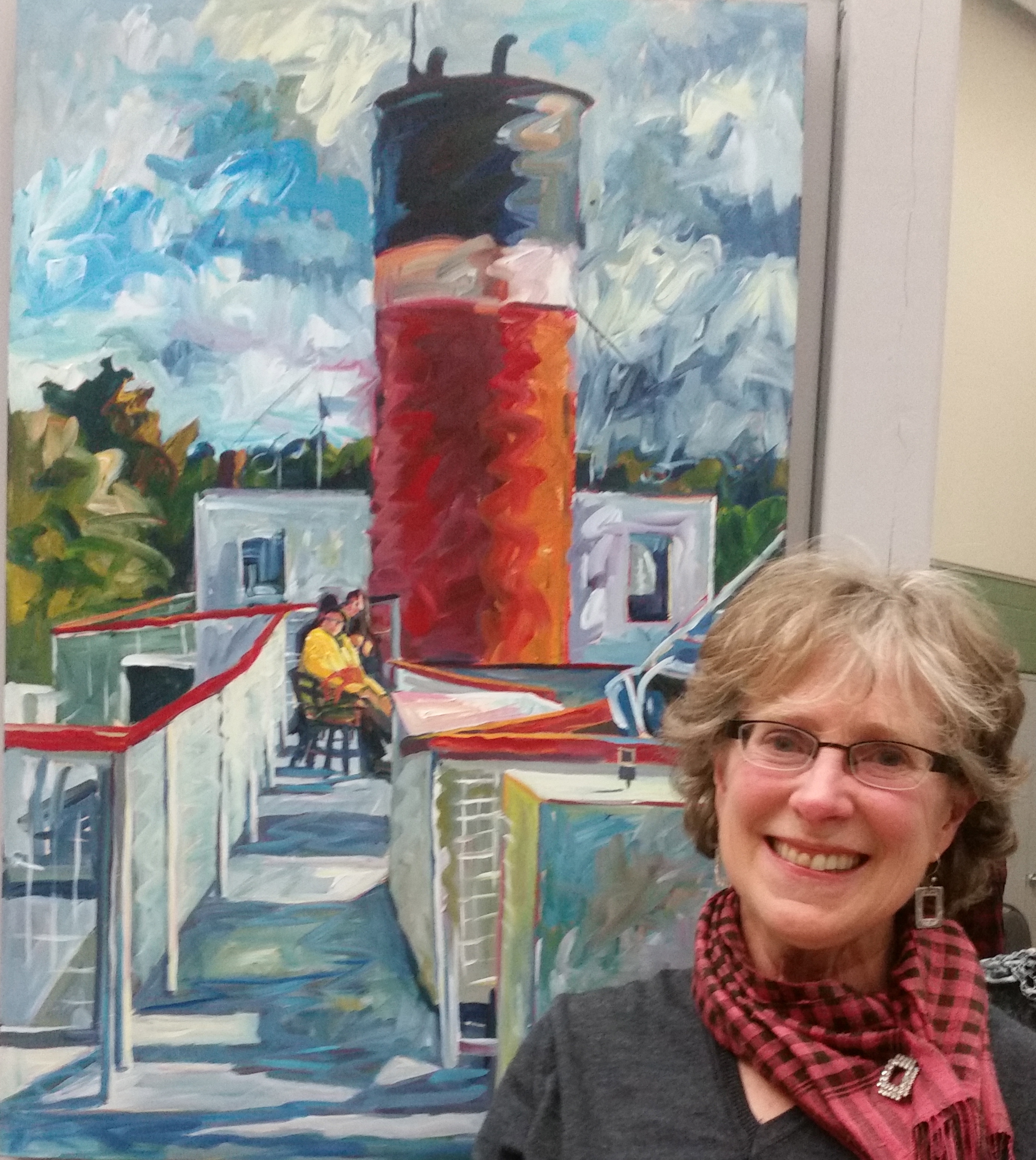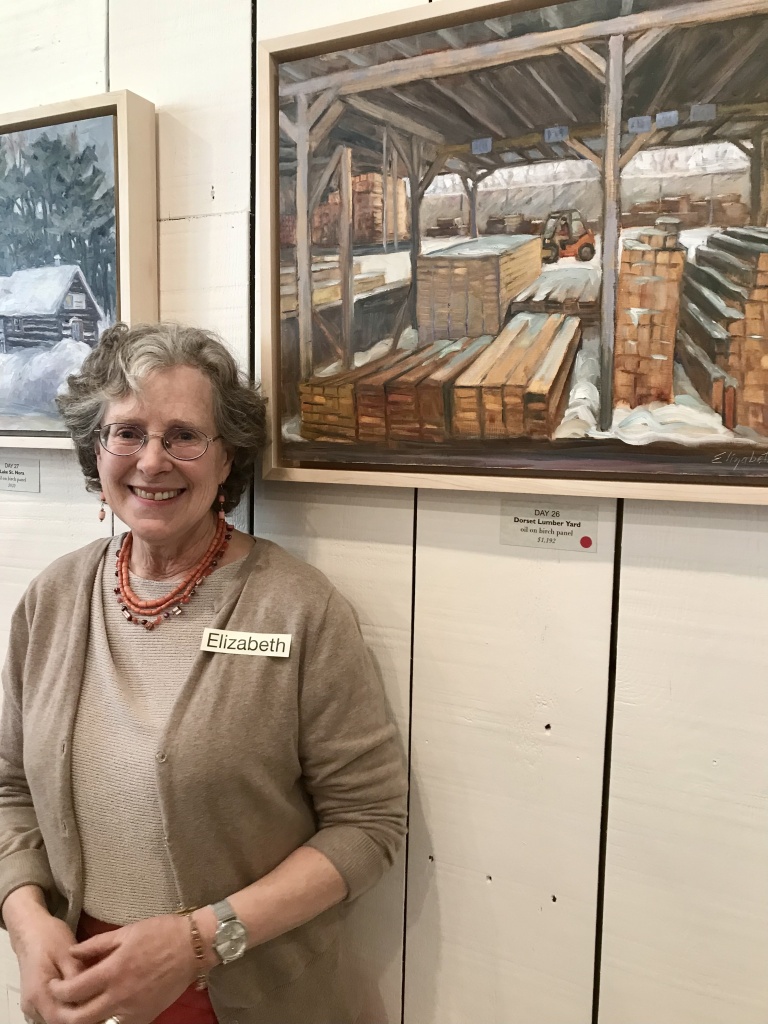
WELCOME.
When I introduce myself, I say, “Hello, I am Elizabeth Johnson from Dorset.” Well, I wasn’t born here, but I have lived here since 1981 when my brand new husband brought me to his family cottage on Shoe Lake. It was a mouse-infested, uninsulated cabin, no winter neighbours within 3 miles and no winter plumbing. This was to be our first home together. He assured me that it was the most wonderful place in the world. What did I think?
43 years later, Dorset is as much a part of me as my own name. “Do you know where Dorset is?” I ask after my introduction. Surprisingly. often, people do – like the woman from Vancouver who was washing her hands in the sink beside me in the public bathroom in Niagara on the Lake. Or the man from Burlington sitting next to me at Toronto’s Koerner Hall. With emotion, they share fond memories of Dorset -. A relative’s summer cottage on Lake of Bays, a kid’s camp on Kawagama, the famous Robinson’s General Store, the lookout tower. Once, I was even told that there is a really good pizzeria in Dorset. Did I know it?
This quaint, historic village on the fringes of Algonquin Park is well-known and loved in the summer.
But the Dorset of wintertime is not.
Winter in Dorset needed to be painted and celebrated.
But there are two other reasons why I felt the need to paint winter in Dorset.
An American company, Strada, that makes a super slick, super expensive, lightweight, portable easel – the envy of all outdoor painters – launched a global challenge to do a painting a day for the month of January. The names of those who complete the challenge are put into a draw. Five lucky painters get a free easel.
On January 1, I painted the first scene only 10ft away from my studio door on Shoe Lake. On January 2, I moved further 1 km away, to paint the Shoe Lake Road. Day 3 found me right in the village itself painting on a bigger canvas. I hung around town for every day till Day 12, then started branching out. To Kawagama Lake, Paint Lake, Rabbit’s Bay. Frost Centre, Lake St Nora. On Day 13, I woke up sick. I set my easel and painted the view from my bathroom window.
While January was relatively mild, it snowed most days. Even just a bit of snow can turn oil paint into tiny ball bearings that fall off the canvas. I looked for overhangs and dense evergreens, wide enough to shelter me. I painted under the eaves at the Haliburton Trails office, under the roof of the Navigation Company, under the overhang outside Caldwell Banker”s office, inside the little gazebo in front of Johnson’s.
I could stand the cold for 3 hour stretches. Then I would warm up in the car, sip my tea, and go out for another hour or two. I really struggled with cold feet. I tried all different things – wool socks, foot warmers, sheepskin insoles, my husband’s big boots, stuffed. Nothing really worked. (I am open to more suggestions.)
At the end of the day 8, I ran into Robinson’s to get permission to paint the village from Robinson’s roof. One hour later, Robinson’s General Store closed its doors.
That is when painting Dorset became a serious mission for me. Over the years, Dorset has suffered from so much loss: the lands and mines office, the school, the Frost Centre, the community centre, our churches and now, the hub of our community – Robinson’s. I placed myself on the street in the middle of the town to paint it from every possible angle for everyone to see that how beautiful Dorset is. – even the important places that are not generally considered typical landscapes painting material – the gas station, the lumber yard, the post office.
Something miraculous happened. People stopped to talk and thank me. June brought me hot chocolate. Vanessa invited me in for a hot lunch. A woman I didn’t know invited me in to warm up. It generated a sense of community to see a painter in the street. Every day, I posted the painting of the day on my Facebook and instagram. Cottagers sent me messages thanking me for connecting them to their beloved town. Several recalled the huge round of cheddar cheese at Robinson’s, the high school trips to the Frost Centre. Others sent love messages to Lance who I painted into the garage scene. Some even said the paintings made them cry from the memories they evoked – others expressed curiosity to see Dorset in the wintertime. One viewer couldn’t wait to open up her Instagram page in the morning to see what I had painted the day before. The response was overwhelming. It was those comments that gave me determination and vision. Without them, I don’t know if I could have finished the project on my own steam. So thank you.
Despite the frozen feet, I love painting winter. Now, I am going to give you a little art lesson. The first thing I do when I am in front of a landscape is squint in order to to break down the scene into big, simple shapes and get rid of all detail. Then I break down those blocky shapes into chunks of light, medium and dark. I rough them in with a big bristle brush and rag in one colour, usually a warm earth colour. A well composed painting has an interesting arrangement of darks, mediums and lights. This is my map where I have worked out the design. Then, I do the painting on top of that monochromatic layer. My map gives me direction and makes me confident to be freer with colour and brushstroke. Winter is so particularly wonderful to paint, because the snow eliminates a lot of unnecessary detail for me and it gives me a readymade, clean, light shape and easily defined mid-tone shadows and dark contrasts. In fact, even if you were to turn a painting upside down, it still works from a design perspective. It still can strike a resonate chord in the viewer, without having to know what it is.
That is why art in the community is so important. It has the power to resonate, to tell stories, to convey history, to connect people to a place, to delight, to make people think and see their ordinary surroundings in a new light.
My goal is to help Dorset heal from the losses to give it hope for the future. It might be one tiny lakeside, neglected, suffering village, caught in the middle of two townships. But I say, stand up, Ontario, and take notice of the resilience, the beauty, the potential of Dorset, and the magic of winter in Dorset.
Give me Dorset any day:
the silence, the profusion of stars in the night sky, the haunting howl of wolves, moose tracks in my lane, the lazy smoke spirals from chimneys, the crunch of clean snow, Shall I go on? sunlit frozen lakes and swamps to explore, glittering iced branches, the invigorating nip of the clean air, What about history? the old white clapboard buildings with green roofs and trim, the ruins of a once vibrant forest industry, the home of members of the Group of Seven, the lakes that David Thompson canoed, For me, Dorset is my home where Brad and I raised our 4 children and established our businesses, Dorset is my favourite place to paint.
It is a privilege to introduce myself by saying, “Hello, I am Elizabeth Johnson from Dorset,
Thank you for coming to celebrate Dorset with me today. Please enjoy the exhibition. This is the only time the collection will be seen together intact. Please feel free to eat, visit, shop and reminisce.


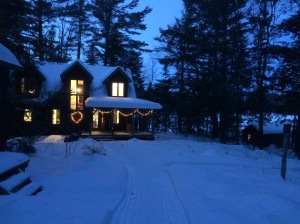
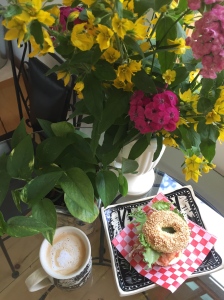
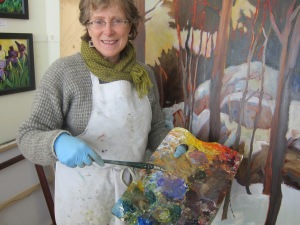
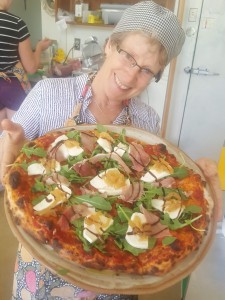
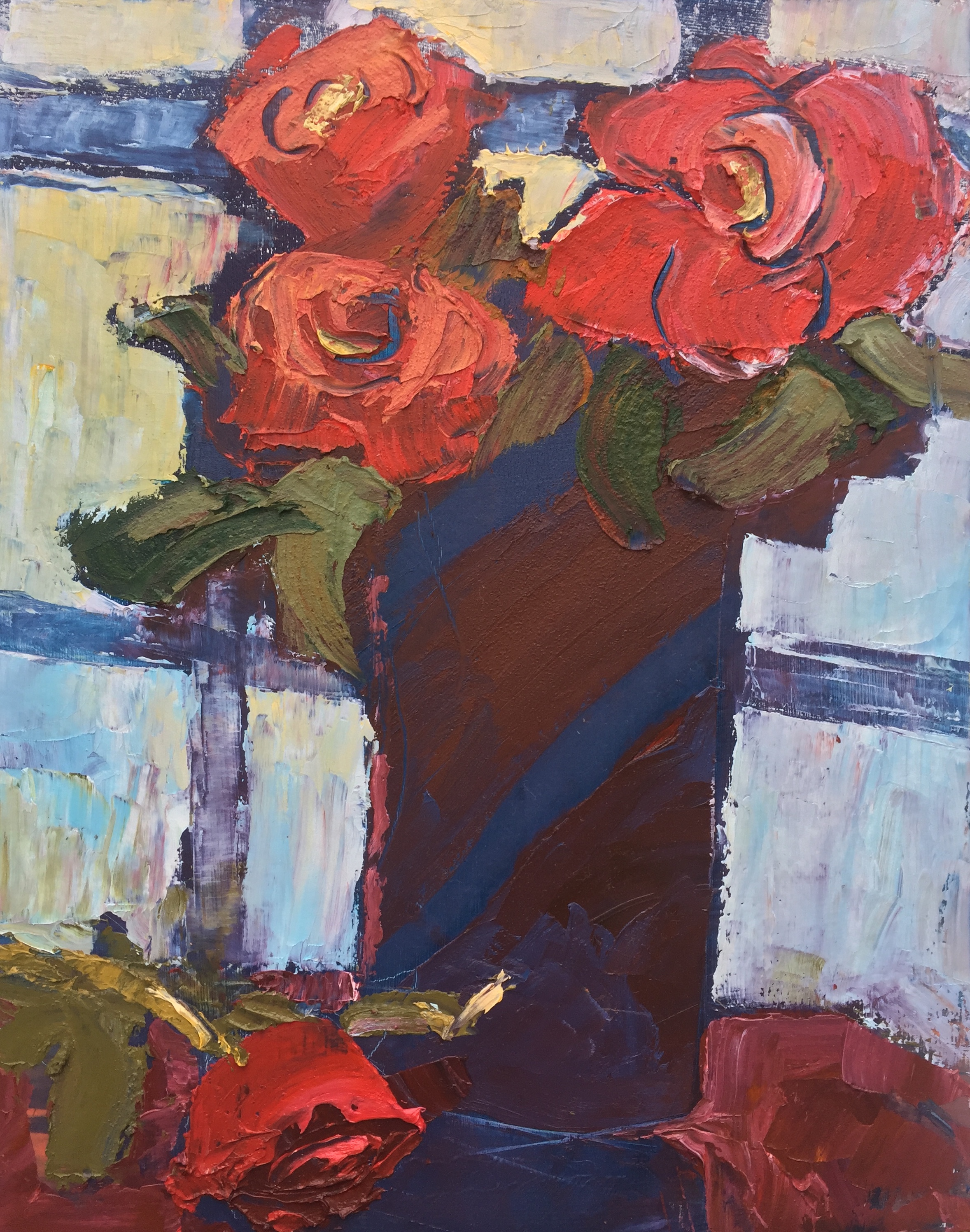
 A solo exhibition of my work, called “Windows on the World”, now hangs in Partners Hall in Algonquin Theatre in Huntsville, Ontario. The grand opening was Saturda, Dec. 15, 2018, and this is the speech that I gave at that The oil painting called “Windows” is St. John’s NFLD and is in the show.
A solo exhibition of my work, called “Windows on the World”, now hangs in Partners Hall in Algonquin Theatre in Huntsville, Ontario. The grand opening was Saturda, Dec. 15, 2018, and this is the speech that I gave at that The oil painting called “Windows” is St. John’s NFLD and is in the show.